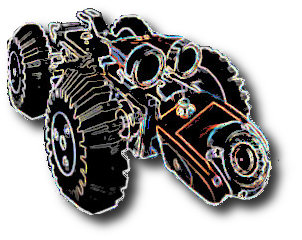|
Over a 10 year cycle, the County of Los Angeles will inspect every foot of the sanitary sewer system and where necessary repair or replace broken or deteriorated sections of the sanitary sewers. This project is an integral part of the County's comprehensive efforts to comply with all federal and state regulations.
The successful completion of the CCTV Inspections will benefit Los Angeles County's citizens and ratepayers throughout the region by reducing sanitary sewer overflows, improving system maintenance and replacement or repair of deteriorated sewer lines as well as providing the infrastructure necessary to ensure continuous uninterrupted sanitary sewer service.
The CCTV program is the first step in determining the integrity of Los Angeles County's sewer system and protecting Los Angeles County rate payers quality of life by eliminating Sanitary Sewer Overflows (SSOs). Through the efforts of CCTV Program, approximately 4,600 miles of sanitary sewers will be inspected for cracks, collapses, and blockages. After extensive investigation and documentation of defects is completed in each phase, a rehabilitation plan is developed, identifying necessary sewer repairs and replacement. In severe situations, immediate repairs are made.  CCTV (closed circuit television) technology will be used to perform the sewer inspection. This technology uses a television camera mounted on a robotic crawler that is connected to a video monitor, a digital video recorder and other recording devices. The robotic system is placed directly into the sewer through a manhole. Once inside the sewer line, the robotic crawler and camera can be operated by remote control located inside a truck. The operator can examine the entire length of sewer line between two manholes. The cameras pan and tilt capabilities allow the operator to move the camera in all directions, to obtain a through picture of the entire sewer line. CCTV (closed circuit television) technology will be used to perform the sewer inspection. This technology uses a television camera mounted on a robotic crawler that is connected to a video monitor, a digital video recorder and other recording devices. The robotic system is placed directly into the sewer through a manhole. Once inside the sewer line, the robotic crawler and camera can be operated by remote control located inside a truck. The operator can examine the entire length of sewer line between two manholes. The cameras pan and tilt capabilities allow the operator to move the camera in all directions, to obtain a through picture of the entire sewer line.The CCTV system relays live footage from within the sewer to a high-resolution monitor in a mobile survey unit. The footage is also recorded digitally. Since the operator has full control of the robotic system, if a defect is detected, the operator can stop the camera and investigate the defect in more detail. With the cameras pan and tilt capabilities, service connections can also be located and documented. An electronic footage counter is connected to the camera, enabling the operator to note the exact location of problems. The operator records structural and service conditions as the live footage is viewed, documenting all defects and noting the general condition of the sewer section.
Once the digital recordings are turned into the office, they are reviewed by engineering staff to verify existing conditions and meet quality assurance standards. The sewer sections are given a grade from 1 to 5, with 5 representing the most severe conditions (e.g., a sewer on the verge of total collapse). The digital recordings are then transferred to a server for long term storage and easy retrieval.
Benefits of CCTV
Cost
CCTV inspections require only a small work crew, therefore making efficient use of man-hours. CCTV also allows efficient examination of the sewer footage and specific information on the exact condition and location of defects, enabling crews to strategically target and implement repairs or maintenance.
Saves Time
Knowing the exact location of defects and blockages enables crews to quickly repair and rehabilitate problem areas.
Efficiency
Through the CCTV system, operators are able to review miles and miles of sewer footage on a specialized computer program, which allows them to revisit problem areas as often as needed without actually having to be in the field. |
Program Details